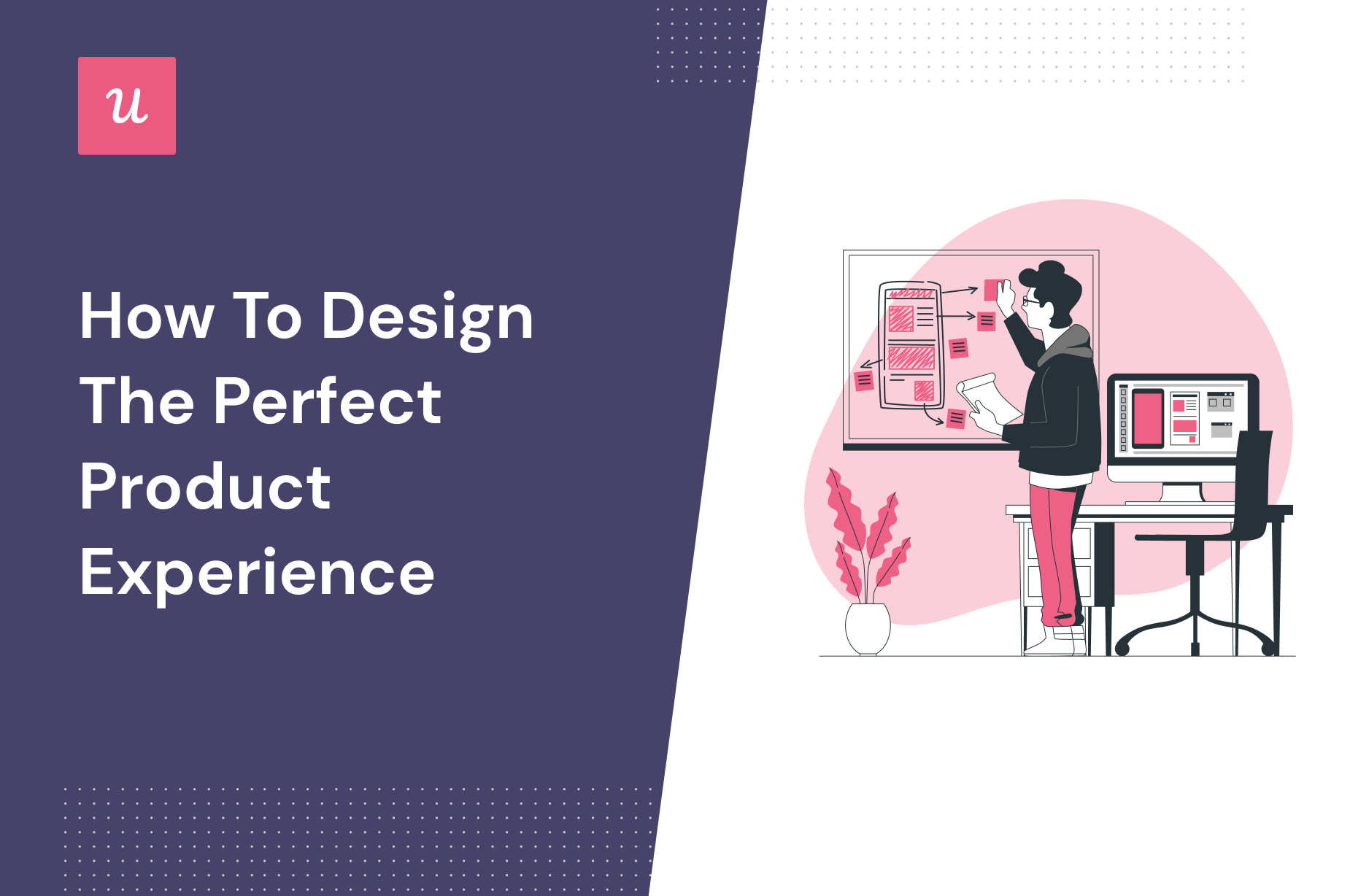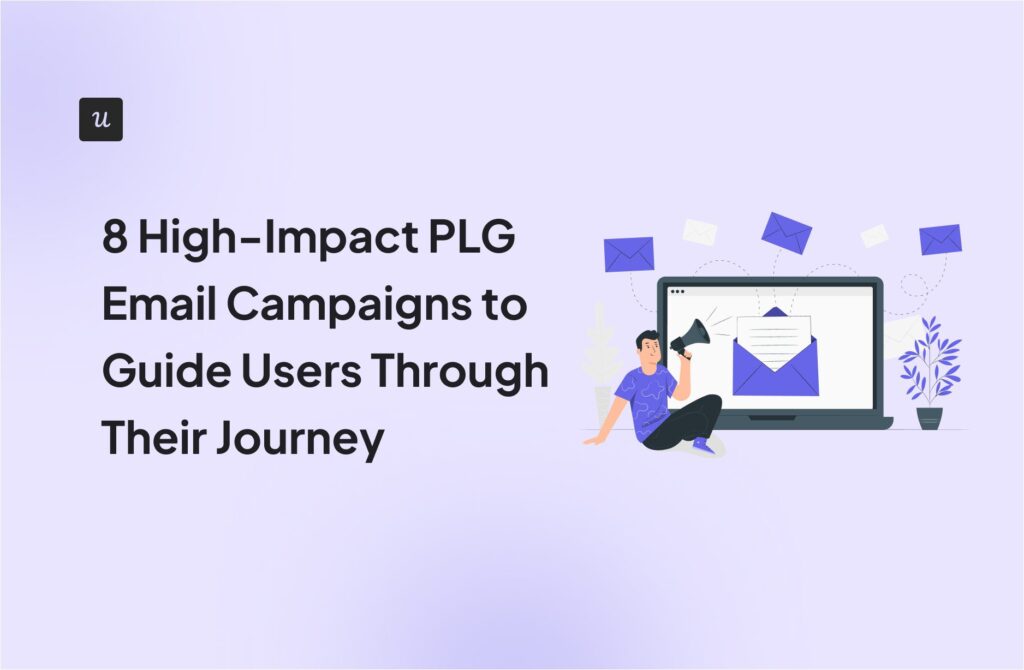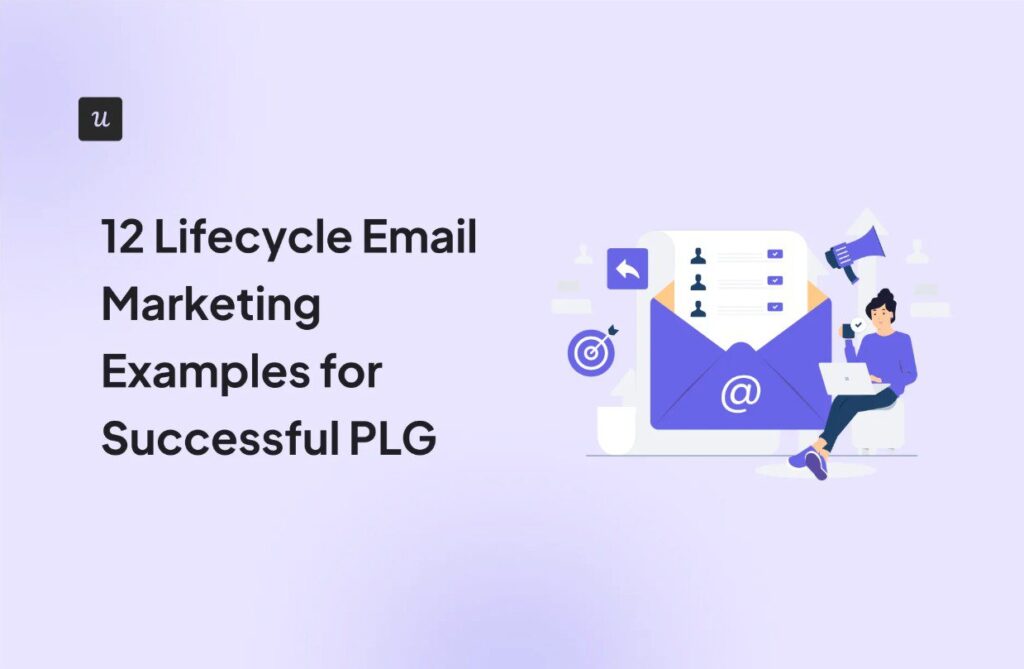
How To Design The Perfect Product Experience In 2023
What is product experience? How is it different from customer experience? Why is product experience important for your SaaS?
These are just a few of the questions we answer in this article.
We’ll show you how to leverage user analytics, use in-app experiences and user feedback to enhance product experience for better user engagement, reduced churn, and strong relationships with your customers.
Get The Insights!
The fastest way to learn about Product Growth, Management & Trends.
Summary of product experience design
- Product experience (PX) is a subcategory within the overall user experience and it refers to the overall sentiment and satisfaction a user has based on their experience with engaging with your product.
- Product experience is part of customer experience. The latter covers the whole customer journey and activities as communication with the support teams too, not just the product.
- Excellent product experience is necessary to attract customers, strengthen existing customer loyalty and increase customer lifetime value.
- Designing a great product experience starts with the use of data analytics to establish a baseline.
- Useful analytical methods include funnel analysis, path analysis, adoption analysis, and retention analysis.
- The user data informs the implementation of in-app engagements, which educate the users about the product (user onboarding), adoption of new features, or re-activate dormant users.
- Use feedback collected using microsurveys and direct interactions with the customers to gather further insights into customer experiences and what else customers expect from the product.
- Using a tool like Userpilot you can track and analyze product usage analytics, collect in-app feedback, and built in-app guidance using modals, tooltips, product tools, and more.
What is product experience (PX)?
Product experience is a subcategory within the overall user experience and it refers to the overall sentiment and satisfaction a user has based on their experience with engaging with your product.
It’s the thoughts and emotions that the users experience as a result of their interactions with the product. Those could be affected by a range of factors, such as the product’s usefulness or usability.
For SaaS products, this includes everything that happens from the moment they first create an account, until they churn.

How does product experience differ from customer experience?
In short, product experience (PX) is the perception of the product and its features.
The customer experience (CX), on the other hand, is a much wider term based not only on the product experience but also on the customer’s impression of the company as a whole.
So user interactions with the customer service teams would be equally important.
Why is product experience important for SaaS companies?
Excellent product experience is necessary to attract new customers and increase customer retention.
Offering a product that is easy to use and solves the user’s problems increases the chance that new users will upgrade from the free version and continue using it.
On the other hand, if the product experience is poor, your new customers are not likely to be interested in subscribing to the premium version. If the product experience deteriorates over time, they will churn and move on to your competitors.
How to design the perfect product experience
There are three key components of a product experience strategy:
- product analytics – necessary to make informed product roadmap decisions and segment customers based on how they interact with your product
- customer touchpoints and in-app engagements – these need to be mapped to each other based on the data
- customer feedback– to further optimize product experience

1. Leverage product analytics to make informed product roadmap decisions
By definition, product experience is very subjective and there is no one-size-fits-all approach to its design. Instead, it needs to be based on insights into user interaction with your product.
Data analytics helps you track user engagement with your product.
Based on product usage analytics you can understand where users encounter friction in your product, where are the drop-off points and which features are users finding most valuable.
Use these to create in-app guides to remove friction across the customer journey and drive feature engagement.
Funnel Analysis
Funnel analysis is a technique used to identify the steps (known as goals or micro conversions) needed to reach a certain outcome (called conversion or macro conversion) in your app, and more importantly, how many users progress through each of the steps.

Funnel analysis lets you identify the stage where users fall off on their way to conversion and design interventions to increase the odds of them reaching the next stages.
Path Analysis
Path analysis is the tracking of the user journey through your product and their interaction with the product features.
Following the users, as they navigate through your product and how they discover and use its features (or don’t) allows you to identify the successful aspects of your product, and tweak it to improve their experience.

Adoption Analysis
Feature adoption analysis tells you which features of your product your users engage with more and make the product sticky and which ones users haven’t discovered yet.

Understanding feature adoption will allow you to reduce churn, increase retention rates or identify upsell opportunities.
Retention Analysis
Retention analysis (also known as survival analysis) analyzes user metrics to gain insights into reasons why customer churn.
Such analysis shows which features contribute to retention and growth most (and which do not).
It also helps you plan how long you need to support users once they start using the product (or its new feature) before they gain independence and the competence level needed to achieve their goals.

Such behavioral data can be used to modify the product and design customer onboarding to improve retention and new user acquisition rates.
2. Map key customer touchpoints to in-app engagements
To improve product adoption and reduce churn, you need to make the effort to constantly re-engage and re-activate users.
User Onboarding
User onboarding is the ongoing process of teaching users how to use the product to get the best value out of it.
Onboarding involves the use of in-app guides, in-app messages, tooltips, and product walkthroughs to educate the users about their product features.

The goal is to lead them to the moment when they understand the value of the product (the Aha Moment) and experience that value firsthand (Product activation).
Activation points will differ from user to user based on the user’s job to be done.
You need to segment your user base using product usage analytics and personalize the onboarding path for each segment for a better product experience.
New Feature Activation
New feature activation is the moment the customer uses a particular feature for the first time, followed by feature adoption, i.e. the stage when the customer uses the feature regularly.
To design a perfect product experience you need to continuously deliver value to your users. One way to do it is to announce new features in-app, making sure users discover what’s new.
In-app notifications are a good way of introducing new features to the right user segment.
Check out how we announced the new and improved Resource Center feature in Userpilot, using a modal ( you guessed it, built with Userpilot).

Same as with onboarding, when you announce a new feature, for the best product experience you need to make sure the user who would benefit more from the new feature adopts it.
User Reactivation
User reactivation aims to win back disengaged customers.
Because they don’t use the product on a regular basis anymore, in-app messaging may be of limited use. Instead, emails could be more effective at reaching them.
There could have been different reasons for them stopping to use the product, so again segmentation is crucial when planning such communication.
Once you got them back inside the app, using a personalized message will set the right user expectations and start their new product experience on the right foot.
Check out how Monday greet reactivated users with a modal.

3. Use customer feedback to optimize your product experience
Apart from user analytics, direct customer feedback can be an invaluable source of information on product upgrades that are needed to further enhance user experience.
For a good product experience, you should consider collecting feedback using in-app microsurveys.
Microsurveys
Microsurveys are short surveys delivered to the user either via an in-app message or a pop-up on a website.
Their aim is to collect general user satisfaction data (NPS surveys)…

…or detailed feedback on very specific aspects of the product experience, for example, a particular feature.

Context-based triggering of microsurveys, i.e. immediately after they’ve finished using a feature) can result in a better response rate and also more valuable insights that you can use to improve the user experience.
Customer Success Questions
Customer success managers interact with users on a regular basis.
This gives them the opportunity to ask the users a lot of questions and generate valuable customer data that can be fed back to the product teams and used to improve product experience by:
- adding or removing features that are relevant or not for the user
- removing friction with in-app guidance

It goes without saying that to boost customer loyalty, build strong customer relationships and increase customer lifetime it is essential that you actually follow up on the feedback.
Good Product Experience Examples
Let’s have a look at a few examples of great product experiences.
Userpilot: how we use our own product to improve user experience
Userpilot is a product growth and adoption tool that offers all of the three elements to provide a good product experience: analytics, collecting feedback, and communicating with users in-app.
You’ve already seen an example of how we announced our new feature (Resource Center) update with an in-app modal.
So how did we do it?
First, we decided to use a modal since this was an important announcement for us and created an in-app flow that triggered for the relevant user segment.
In Userpilot, you can create multiple user segments based on product usage data, microsurvey responses, and other user identification criteria.

Then to make sure the users interact and adopt the feature our success team also set up a webinar to help explain the changes and the added value the new feature brings.
And of course, we announced the webinar in-app to users who’ve seen the modal.

Amazon provides great customer service
Amazon is valued for its customer service. The company offers competitive prices, completing the purchases is quick and dead easy, and their ability to get your order to your doorstep overnight is difficult to match.
Their hassle-free return policy is in particular what distinguishes them from many online retailers. While the exact terms and conditions may vary from country to country, normally just a few clicks are enough to get a free return label. Your money is often reimbursed as soon as the label is scanned at the chosen drop-off point (like a post office).

Netflix focuses on individual customers
The streaming giant Netflix has mastered the art of content personalization.
Thanks to their in-house machine learning algorithm, they are able to identify the content that you are interested in. The more you click and search in the service, the more accurate the recommendations become.
However, this goes beyond choosing the right series or films for their customers. Netflix uses the data from user interactions to customize also what posters they see for each of the films to make them more appealing.

Buffer pairs a “Happiness Team” with a great product
Buffer, the social media management tool, prides itself on its customer-centric approach. They realize that a great product is not enough (which Buffer is). That’s why their customer support team, nicknamed Happiness Team, goes to great lengths to ensure customer satisfaction.
Buffer appreciates the importance of anecdotal data which is gathered through interactions with their customers to improve their product. That’s why they encourage their customers to get in touch:
“We view every interaction that comes our way—every email, tweet, question, review, mention and more—as a true privilege. We know that it means someone took special time out of their day to think about us or get in touch with us. It’s a chance for us to have a conversation, to learn something we didn’t know before, to think about what we could do differently or better.”

Their approach goes beyond responding in a reactive manner. Their goal is to be “proactive and find ways to surprise and delight even beyond the moments when people have already contacted us”.
HubSpot publishes fresh and relevant content
Hubspot is a software provider specializing in sales, services, and inbound marketing.
The team at Hubspot relies on high-quality content to keep its users engaged. They use their website to deliver up-to-date reports and news from the industry to educate their users and allow them to make informed business decisions.

The articles and guides are backed up by a chatbot which assists their readers in finding the answers to their questions.
Conclusion
Designing a great product experience starts from collecting data about user behavior. The data can be then leveraged to define key touchpoints and the best ways to engage users with in-app experiences.
Want to start creating better product experiences in-app? Get a Userpilot demo and see how easy it is to get started.





